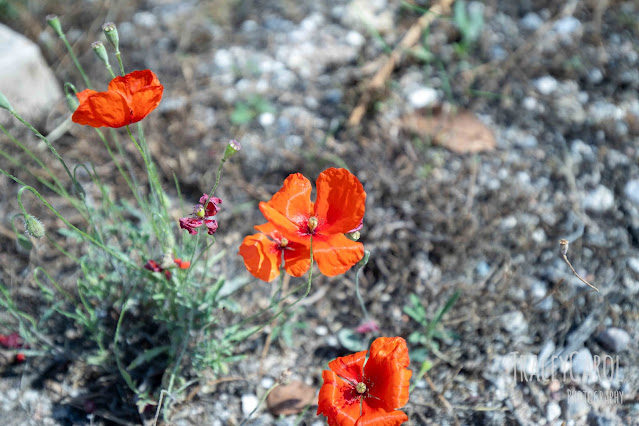We started today with a trip to the library - Hadrian’s Library that is. This library dates back to the 1st or 2nd century when Rome had influence over Greece. The current ruins known as Hadrian’s library include some archeological items from the library, but also items and structures from later years after Sparta (Athens’s long time rivals) invaded and destroyed and repaired and repurposed the library. During the time that it was a library, it is said to have held around 20,000 papyrus or vellum scrolls. The very back section was the main library part of the structure and not only held the scrolls but also was a place for orators to come and present information. The scrolls could leave the library (no check outs!) so people studied and discuss while there. To help them relax after study and discussion, the library also contained a pool!! I am just going to say, I have been in a LOT of libraries and NONE of them have pools. Hadrian was way of ahead of his time!
 |
| Pool area |
 |
| Notice it's Latin instead of Greek |
 |
| This whole back section was the library proper |
 |
| The library also had rooms (study rooms) |
 |
| I love the variation in the marble. |
 |
| When invasions caused destruction, things were rebuilt with whatever items they found In the rubble. |
 |
| Originally was a fresco |
 |
| These large columns are up against Hadrian's library but actually belonged to a church that was attached. |
 |
| Yertle |
After leaving the library, we headed to the Roman Agora. This area was similar in purpose to yesterday’s Ancient Agora, but was minuscule in size comparison. It did contain a rather interesting and well-preserved structure that is known as the world’s first meteorological station. It also served as a type of sundial and if the sun wasn’t shining, it also had a 24 hours hydro powered clock inside. Water from a spring in the Acropolis ran down into the structure and it was used to continually power a clock dial! One interesting tidbit about the Roman Agora is that there were specific people employed to monitor the sales practices of the vendors in the agora to insure fair practices and pricing.
 |
| I loved how the columns framed the view of this house |
 |
| Shared latrine for 70 people - yikes!! |
 |
| Tower of the Winds |
 |
| Tower of the Winds ceiling |
 |
| Hydro powered clock area |
 |
| Reading about Agora |
 |
| Original floor of Roman Agora |
After a little time out of the heat (and coffee), we meandered through shopping areas to our final ruins destination - Kerameikos. This is an area where the western most portion of the city wall and a cemetery was discovered. There were two layers of the city wall as well as a 9 meter moat. Burials, however, had to take place outside the city walls. The belief was that everyone deserved a burial, but those that were more prominent or influential received elaborate monuments.
 |
| Monastariki Square |
 |
| Greek Reads! |
 |
| I could fill an entire book with Athens graffiti!! It's EVERYWHERE! |
 |
| Western most part of Athens city wall |
 |
| former moat |
 |
| Colonnade area of festivals |
 |
| Jac overlooking the colonnade area |
 |
| 5th century pebble tiles |
 |
| Yertle's friends |
 |
| This church was oddly built in the 1950's - never completed and never used - locals are perplexed as to how they got a building license on archeologic grounds. |
 |
| Monuments carved by the same person who did Temple to Athena Nike |
 |
| round grave markers |
We have been quite amazed at how much of this stuff we can just simply touch and walk on. There are a few roped off areas but not many!
 |
| Standing where 5th century AD Greeks stood |
We made our way back toward the shops and restaurants to find some food, stopping along the way as some Agora flea market type of stores just out of curiosity. We ate at Monastiraki Square - name such because the area once contained a monastery. My food, again, was delicious!!
 |
| Fried zucchini |
 |
| Gyro with grilled vegetables, tomato chutney and mastelo cheese! |
 |
| Complimentary little desserts - orange and spiced fig |
After hanging out for a bit at the Airbnb, we made our way to the south side of the Acropolis for our final Athens exploration. We climbed Filopappou Hill. This hill is named after Philopappos, a great benefactor of ancient Athens in the first century AD. His desire was be buried at one of the highest points in the city and since he was so well liked, the honored his wishes. There is a large monument at the top of the hill honoring him. But the hill is most known for its 360 views of the city as well as the best location for sunset watching. It really is so, so beautiful!
 |
| Monument to Philoppapos |
 |
| Waiting for the sunset |
 |
| This photo begins a complete 360 sequence of pics |
 |
| Hazy evening but that is the sea in the distance. |
 |
| The sun is just peeking behind the mountain! |
 |
| Completely set and everyone on the hill cheered. |
Back near our Airbnb, I had spied a fabulous looking dessert shop so we ended our evening with baklava and ice cream!!
 |
| It was super yummy!! |
This is our last day within the city limits of Athens. Tomorrow, we are off to Crete!!










































































No comments:
Post a Comment